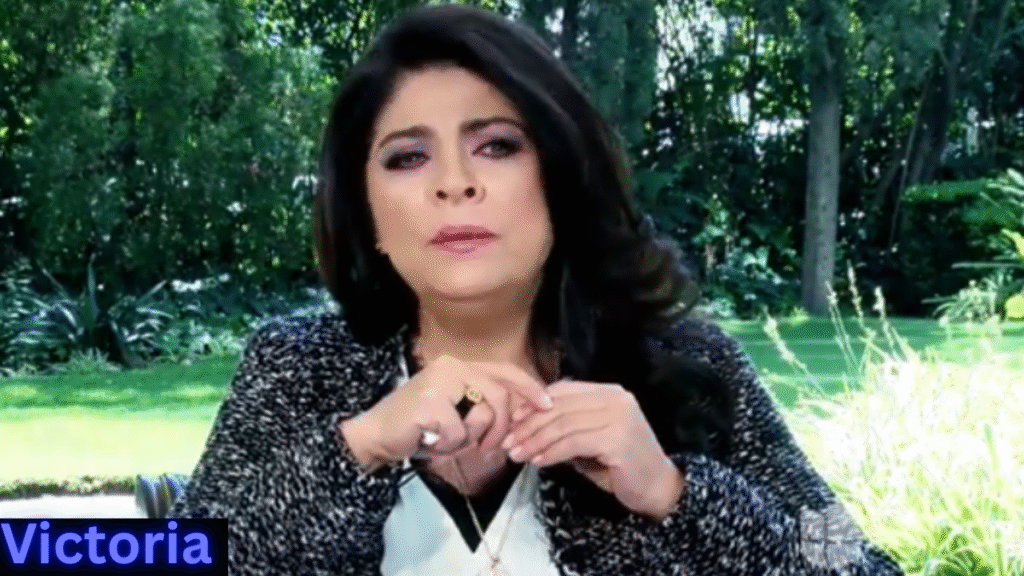Victoria Ruffo, born María Victoria Eugenia Guadalupe Martínez del Río Moreno-Ruffo on May 31, 1962, in Mexico City, remains a towering figure in Latin American entertainment. With a career spanning over four decades, Victoria Ruffo has become synonymous with the emotional depth and resilience characteristic of telenovela heroines. As of 2025, she continues to captivate audiences with her performances, solidifying her legacy as the “Queen of Telenovelas.
Table of Contents
Early Life and Rise to Stardom
Born María Victoria Eugenia Guadalupe Martínez del Río Moreno-Ruffo on May 31, 1962, in Mexico City, Victoria Ruffo embarked on her acting journey in the early 1980s. Her breakout role came in 1983 with the telenovela La Fiera, where she portrayed Natalia Ramírez, a performance that showcased her emotional depth and set the stage for a prolific career.
Throughout the 1980s and 1990s, Victoria Ruffo became a household name, starring in a series of successful telenovelas such as Juana Iris (1985), Victoria (1987), and Simplemente María (1989). Her portrayals of strong, complex women resonated with audiences, earning her critical acclaim and a devoted fan base.
A Versatile and Prolific Career
Victoria Ruffo’s versatility as an actress is evident in her diverse body of work. She seamlessly transitioned between genres, taking on roles in dramas, comedies, and even theatrical productions. Notable performances include her roles in Capricho (1993), Pobre Niña Rica (1995), and Vivo por Elena (1998), each showcasing her ability to bring depth and nuance to her characters.
In the 2000s, Victoria Ruffo continued to dominate the telenovela scene with standout performances in Abrázame Muy Fuerte (2000), La Madrastra (2005), and Corona de Lágrimas (2012). Her portrayal of María Fernández Acuña in La Madrastra was particularly lauded, reaffirming her status as a leading figure in the industry.
Health Challenges and Resilience
In recent years, Victoria Ruffo has faced health challenges, including lumbar and cervical hernias that have occasionally required her to use a wheelchair during travel. Despite these obstacles, she has approached her health with characteristic resilience, undergoing therapeutic treatments to manage her condition and avoid surgery.
Her openness about her health struggles has been met with widespread support from fans and the entertainment community, further highlighting her strength and determination.

Continued Success in the 2000s
The new millennium saw Victoria Ruffo taking on roles that further showcased her versatility. In “La Madrastra” (2005), she delivered a compelling performance as María Fernández Acuña, earning critical acclaim. Her role in “Victoria” (2007) and “En Nombre del Amor” (2008–2009) continued to demonstrate her range and depth as an actress. Victoria Ruffo’s consistent excellence kept her at the forefront of the industry.
Personal Life and Family
Beyond her professional achievements, Victoria Ruffo’s personal life has also been in the public eye. She was married to comedian Eugenio Derbez, with whom she has a son, José Eduardo Derbez. In 2001, she married Mexican politician Omar Fayad, and they have twins, Victoria and Anuar. Victoria Ruffo’s ability to balance a demanding career with family life has been admired by many.
Business Ventures and Philanthropy
Victoria Ruffo’s influence extends beyond acting. She has ventured into business, launching her own clothing line, Victoria Ruffo Collection, which offers stylish and affordable fashion for women of all ages. Additionally, she has authored several books, sharing insights into her life and career.
Her philanthropic efforts are equally noteworthy. Victoria Ruffo actively supports organizations focused on children’s education, mental health awareness, and healthcare initiatives. Her commitment to giving back to the community underscores her compassionate nature and dedication to making a positive impact.
Recent Endeavors and Legacy
In recent years, Victoria Ruffo has continued to take on roles that challenge and inspire. Her performance in “Corona de Lágrimas” (2012–2023) as Refugio Chavero was particularly noteworthy, earning her the 31st TVyNovelas Award for Best Lead Actress. In 2019, she ventured into comedy with “Cita a Ciegas,” portraying Maura Fuentes de Salazar, showcasing her adaptability and willingness to explore new genres.
Victoria Ruffo’s influence extends beyond the screen. Her dedication to her craft and her ability to portray relatable, strong female characters have left an indelible mark on the telenovela genre. As she continues to engage with audiences in 2025, Victoria Ruffo’s legacy as a trailblazer and icon remains firmly intact.

Conclusion
Victoria Ruffo’s enduring appeal lies in her remarkable talent, unwavering dedication, and the genuine connection she fosters with her audience. Her contributions to the world of telenovelas have not only entertained but also inspired generations. As we celebrate her ongoing journey in 2025, Victoria Ruffo stands as a testament to the power of storytelling and the enduring impact of a passionate artist.

